Last Updated on January 7, 2023 by a Friendly Gardener
The Magai Paan plant, better known as the Betel leaf plant, is recognized for its large waxy, glossy green heart-shaped foliage with reticulate venation. The Magai is a creeping plant, making it ideal for hanging baskets or as container houseplants with support poles or trellises. It finds its natural habitat in tropical and subtropical climates, but this perennial herb can be successfully cultivated as a houseplant.
Belonging to the pepper family, it is native to India where these plants can be seen just about everywhere, latching onto tree trunks, or creeping on the ground. It is the primary ingredient in a famous dessert known as Indian Dessert Paan. Surprisingly it is not Indian in origin but originates in Southeast Asia according to A Historical Dictionary of Indian Food by Achaya.
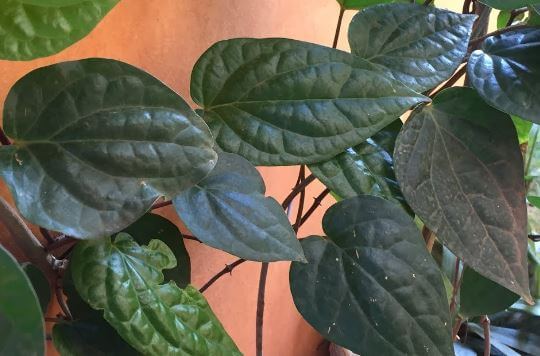
Employed in cooking as well as medicine, it is also an important ingredient used in Hindu religious rituals, especially marriage rites. The Betel leaf has a pleasant but unique taste when consumed and is often served with areca nuts or other fillings. It can nowadays be found sold on every street corner with multiple modern variations including honey, chocolate, almonds, strawberry, and cherry. The species has more than 90 varieties, more than 40 of which, are cultivated in India.
The evergreen Betel Leaf plant, botanically named Piper Betel and a member of the Piperaceae family enjoy some partial shade with evenly moist soil. It does not respond well to soggy soil or frost which can damage foliage. If you live in a warm climate, it can also be employed as a groundcover outdoors.
There are a variety of Betel Leaf plants available. Among the most popular cultivars, we find
- Banarasi
- Bangla Patta
- Calcutta
- Kapuri Paan
- Magahi
Foliage is harvested not only for use locally but for international export, thus providing a major source of income for rural farmers in Bangladesh.
Magai Health Benefits
Appreciated for its medicinal properties, the Betel Leaf plant is packed with B1, B2, B3, and C vitamins as well as calcium and carotenes. Leaves are regularly chewed for various reasons including reducing bloating, warding off throat infections, and as a breath freshener. It is thought that chewing Betel leaves aids in digestion, and may help in the treatment of constipation, gastric ulcers, and boils. It is often employed as the ending of a meal.
Magai Plant Care
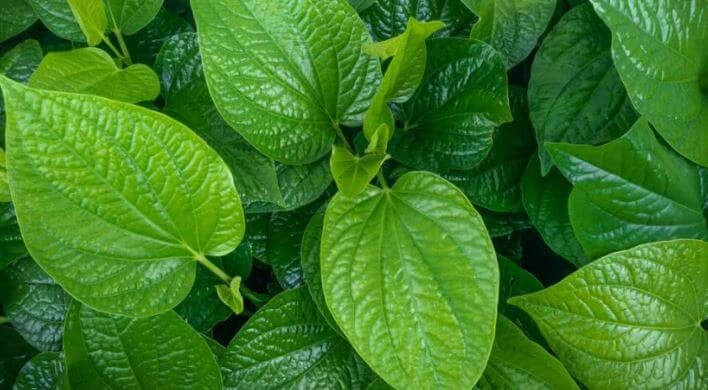
With the proper environmental conditions, the Magai plant will thrive even as a houseplant. When cultivated indoors they can be planted at any time. Should your plant produce its characteristic white flowers, these can be crushed to produce a peppery fragrance.
Soil
Your Magai plant likes a combination of sandy and loamy soil that is slightly acidic. Planters should be deep and medium-sized for container cultivation. Amending soil with organic matter such as aged manure is recommended. Soil beds should be well-draining.
Light
The Betel Leaf plant enjoys bright indirect sunlight or filtered light, so a bit of partial shade or dappled light will work well. It should not be exposed to direct sunlight or kept in the dark. Harsh light will burn foliage. If the light is a problem, consider supplementing with a grow light.
Water
Soil should remain moist, however, it should not be waterlogged. Soggy soil will encourage fungal infections. Allow the soil bed to dry on top slightly before watering. Beware of overwatering as this can lead to root rot.
Watering may need to be increased in the summer, while it can be reduced during winter and cooler seasons.
Temperature
These are tropical plants, so they need to be kept warm. Temperatures should not be allowed to drop lower than 40° to 45°F. The cold will encourage the plant to enter dormancy and leaves will drop.
Feeding
For best results, feed your Magai plant once every two weeks with a liquid fertilizer during the growing season. A fertilizer rich in nitrogen is recommended. An alternative is to side-dress your plant several times a year with compost or aged manure.
Pruning and Harvesting Betel Leaf
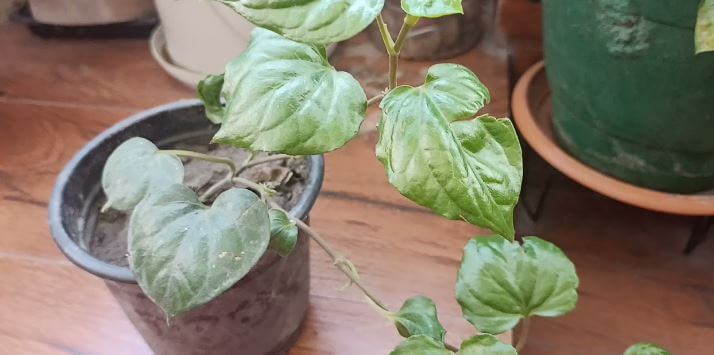
Once your plant reaches approximately three to four feet in height, prune your plant at regular intervals to stimulate new growth.
Approximately four to six months after you have planted, your Magai plant should be ready for harvesting. Snip off fresh leaves with sterile garden scissors as needed. Never remove more than 1/4th of the plant when harvesting.
Potting and Repotting
You will need to repot your Magai plant when the current pot fills with roots. This will be apparent when the roots emerge from drainage holes or peek from the topsoil. Choose a new container that is several inches larger. Remove the plant from the actual container and gently remove the old soil. Replant your Magai in the new pot with fresh soil.
Betel Leaf Plant Propagation
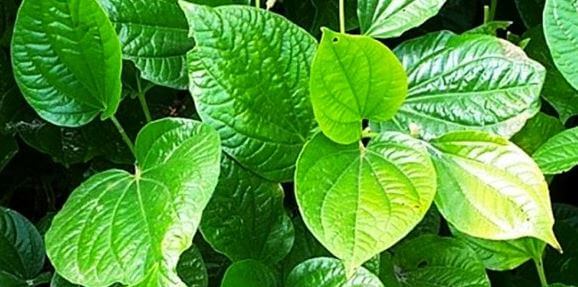
Betel Leaf can be cultivated using seeds, stem cuttings, or root division. Seeds are difficult to find as the Magai is more common in Asia.
Betel Leaf is best propagated with stem cuttings following these simple steps:
- Prepare a stem cutting four to six inches in length. Cut below a leaf node at a 45° angle. Remove all foliage except for the top two on your cutting.
- Coat the cut end in the rooting hormone. Place the cut end in well-draining soil. Water well.
- Position your pot in bright, indirect light.
Betel Leaf plants can also be propagated in water. Put your cutting in a jar of water and place it in indirect light. Change the water every three days. When roots develop, the cutting can be transplanted into well-draining soil.
Magai Plant Problems
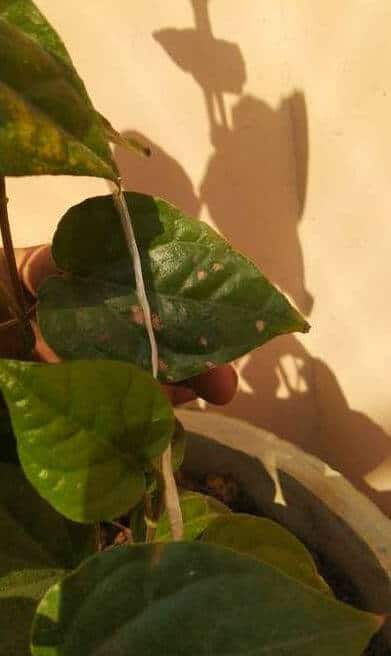
The Magai plant is susceptible to red mites. If you see evidence of these insects, treat your plant with insecticidal soap or organic pesticides such as Neem oil.
Leaf blight is the principal concern for disease with this plant. Remove any infected stems or leaves showing dark spots to prevent the spread of the infection. Root rot is potentially a problem but is usually caused by overwatering.

